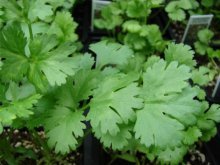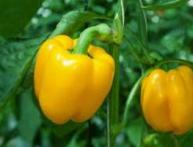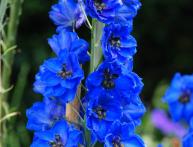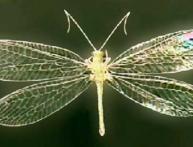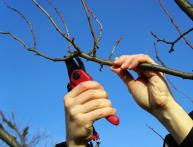Coriander: medicinal properties, its benefits and harm
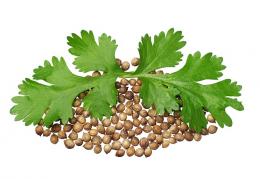
Very often, if you feel unwell, you should not rush to the pharmacy. Common wild or cultivated plants will help you cope with the disease. Sometimes, with the help of herbs, you can not only alleviate the course of the disease, but also cure a particular ailment. In addition, including some plants in the diet serves as good prevention. This fully applies to coriander, medicinal properties and the benefits of which have been known for quite a long time.
Content:
Coriander, plant description
Many people watched the famous film “Kin Dza Dza”, in the title of the film they used the name of the fragrant green herb cilantro. It turns out that the plant is called coriander, and its seeds, which are eaten, are also called. But coriander greens are known as cilantro. Vegetable coriander or seed coriander is a plant from the genus Coriander, family Apiaceae. An annual herbaceous plant, coriander sativum is found everywhere as a garden crop. The root of this plant is spindle-shaped, taproot. The aerial part is represented by bare straight or slightly curved stems and alternately arranged leaves. Leaves can be divided into three types:
- leaves of a basal rosette, long petioles
- leaves of the lower part of the stem, short petioles
- leaves of the upper part of the stem, without petioles, sedentary
- The lower leaves tend to dry out very early
The flowers are collected in a complex umbrella.Flowering begins from the central umbrella. Moreover, umbrellas of one tier bloom simultaneously on all shoots. The flowers are most often white, cream, or pale pink. Sometimes there are specimens with purple flowers. The plant produces fruits - rounded two-seeds. Since flowering is not simultaneous, the fruits do not ripen simultaneously. In addition, the fruits are prone to shedding.
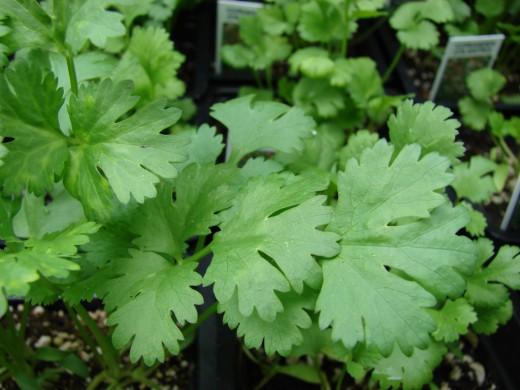
The coriander harvest begins well in advance. They begin to mow it when the ripeness of the fruit reaches 40-50% and they are still very firmly attached to the undried stalks. The plant remains mowed for up to five days. At this time, the fruits are ripening. During industrial cultivation, ripe coriander is threshed using special combines. The seeds are dried and stored in sealed containers. And, although coriander seeds and greens have an ambiguous smell and taste, the plant is very popular in cooking. Due to its chemical composition, it has a number of medicinal and beneficial properties.
Coriander, medicinal properties
The medicinal properties of the green parts and fruits of coriander are due to their chemical composition.
Coriander or cilantro greens are primarily rich in vitamins:
- A, B1, B2, C. It contains essential oils, sugars, and other useful substances.
- Combination vitamin A The C and rutin in cilantro has the ability to strengthen capillaries.
- The chemical composition of coriander seeds is much richer.
The content of fatty oils in coriander seeds reaches 20%. These include fatty acids:
- isooleic, 52%
- oleic, 29%
- linoleic, 14%
- palmitic, 3%
- stearic, 1.5%
- maristine, up to 0.5%
The important chemicals are linalool and geraniol. They are part of the essential oil. Also present in the seeds:
- coriandrol (steroid)
- Sahara
- vitamins
- organic acids
- sterols
- pectins
- alkaloids
Coriander contains minerals such as selenium, calcium, iron, potassium, magnesium. Medicinal properties seeds Coriander is used primarily in the treatment of the gastrointestinal tract. Infusions and decoctions are good for restoring the functioning of the stomach and intestines after severe infectious diseases. In case of excessive gas formation, use separately or together with dill seeds. Coriander also helps in the treatment of gastritis, stomach ulcers, and duodenal ulcers. It reduces the number of harmful bacteria and relieves pain.
Bactericidal properties are used in the treatment of inflammatory diseases of the respiratory tract.
Coriander is used in the pharmaceutical industry in the production of products for the treatment of cataracts, glaucoma, and conjunctivitis. Both the green parts and the seeds are used as means to support male potency and are used to prevent impotence. The beneficial properties of coriander are in demand in cooking, cosmetics, and perfumes.
The benefits and harms of coriander
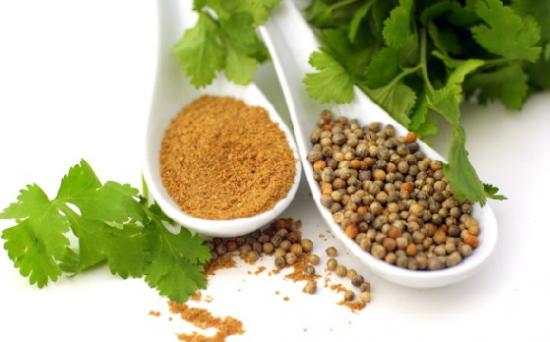
Coriander in cooking
Benefit coriander is widely used in cooking. Eating greens helps improve digestion and relieve the feeling of heaviness when eating. Greens are used only fresh and are not subjected to heat treatment. It is not only added to dishes, but also served as a whole. Coriander seeds, whole and ground, are also widely used in cooking. They not only enrich food with vitamins and minerals, but also stimulate the secretion of gastric juice and bile. All this facilitates digestion, especially when eating heavy meat products.
It has been observed that coriander seeds provide relief after excessive alcohol consumption. If you chew and eat a few pieces after a party, not only will the smell of alcohol disappear, but in the morning there will be no headaches or other negative consequences. It is important to remember that for a positive effect on the body, it is enough to consume from 1 to 4 grams of coriander per day. Excessive consumption of coriander in food can cause disturbances in the functioning of the nervous system, increased excitability, and sleep disturbances.
Coriander in cosmetology, perfumery and aromatherapy
The beneficial properties of coriander are used in the manufacture of various lotions, creams for the skin of the face, hands, and décolleté. In home cosmetics, it is used for decoctions and masks in the treatment of acne, swelling in the eye area, and peeling of the skin. Coriander normalizes the functioning of the sebaceous glands on the scalp.
Rinsing your hair with coriander decoction significantly improves its condition and appearance. In the production of perfumes, perfumes and deodorants, they also use oil coriander When inhaled, the aroma of coriander will help get rid of migraines, seizures, and heart rhythm disorders. In addition, coriander is a good restorative and preventive remedy that should be used in everyday life.
Video about the beneficial properties of coriander:
Interesting information about the vegetable garden

